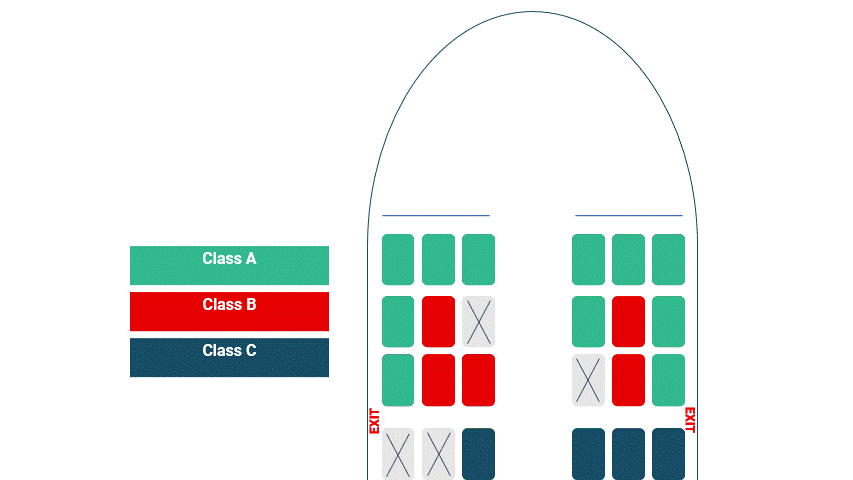As you’ve probably gathered by now, IATA’s vision for a future based on an Offer and Order model is coming—and we’re all in.
We’ve previously outlined that this future model will bring about a streamlining of constrained processes and standards—resulting in new growth opportunities and more retailing flexibility. Within that broad vision, what about the specifics?
As we examine if (or how) legacy processes will translate in a future state, we turn our attention to booking classes and fare filing. Will they eventually be resigned to the history books?
As consumer choice grows exponentially, the concept of a limited number of pre-defined airline booking classes has no place in a dynamic, retail-led future.
What are booking classes?
The history of booking classes dates back several decades to the very early days of commercial aviation. The usage of booking classes has changed little. At a basic level, booking classes – represented by a letter of the alphabet from A to Z – denote the different categories of tickets sold by an airline so they can understand what type of fare a traveler purchased. Airline revenue management teams use booking classes to control how many seats can be sold at a particular fare level.

What are the current challenges?
The booking class system was conceived at a time when the aviation industry was still developing and had not yet gone ‘mainstream’. Airplanes were smaller in size and had fewer seats. There was little differentiation between seats on any given flight. As air travel grew in popularity and planes became bigger, demand for differentiated offerings increased. Airlines needed a simple way to distinguish which fares individual passengers purchased. They did this by assigning a letter of the alphabet to each fare category.
Fast-forward to today and airlines are continually changing cabin configurations and selling ancillaries a la carte to meet rapidly evolving passenger demands (and thereby increase revenue) through enhanced service offerings. The 26 lettered booking classes no longer offer sufficient flexibility to fully satisfy the needs of today’s airlines. Airlines are already using workarounds to allow greater segmentation of fares – and to capture more incremental revenue. The emergence of machine learning and AI technologies also permits airlines to experiment with dynamic pricing as a way to manage revenue at more and more finely-grained levels. These experiments and opportunities for personalization will only grow in the coming years.
Booking classes as we know them today will cease to be relevant in the retail-led future state
However, the process of phasing them out will take time. The introduction of new technology combined with more intelligent and dynamic processes – driven by the transition to Offers and Orders – will remove the constraints imposed by the current booking class structure. The focus will shift from selling seats at pre-defined price points, to selling personalized products that meet the specific requirements of individual travelers in real time in response to specific shopping requests and broader market conditions.
Why is this a good thing?
The ability to create personalized and contextualized offers for travel is in direct response to evolving consumer demand for such offerings. We live in a dynamic, ‘always on’ world characterized by vast choice and individually tailored solutions. The travel industry must keep up with the fast pace of change. The removal of traditional booking classes will give airlines more freedom to deliver what their customers are asking for, and to reap the reward of increased revenue in the process.

What is fare filing?
Fare filing is the process of publishing airfares through the Airline Tariff Publishing Company (ATPCO) database for onward distribution to Global Distribution Systems (GDSs) and third-party retailers.
Are there challenges today?
The process of filing fares is largely manual and requires data entry of fares, fare rules, price and taxes into the ATPCO database. Historically, once submitted into the ATPCO database and made available to a GDS, this fare data is static. Fares exist until such point as they are sold out and no longer available. Furthermore, the fare data provided is limited to seat availability and cannot accommodate other elements, such as ancillaries.

The future Offer and Order-led retail model will see the concept of fare filing and static fares become obsolete.
The distribution of static fares through a GDS is starting to be replaced by processes that enable airlines to create offers dynamically. In response to a shopping request, airlines will dynamically create offers and assign prices in near real-time. Those offers can contain multiple elements and the limitations that are inherent in the fare filing-based model will disappear. We’ve already seen it happening with airlines that have embraced NDC and agencies that have activated NDC capabilities to shop, book and service NDC offers.

Why is this a good thing?
Airlines will have the ability to optimize the price of individual offers in response to a variety of data signals, most notably customer demand. Those offers will no longer be limited to a seat on a particular flight, but could also comprise personalized and contextualized product bundles.
Replacing the process of filing static airfare, schedule and availability information through third parties with dynamically priced, personalized offer bundles created by airlines is a major step forward for the industry. The implications of such a major shift will extend across the travel ecosystem and the changes won’t happen overnight.
Sabre is prepared to work collaboratively with our airline partners throughout the transition period, ensuring an appropriate balance between the need for continuity today and the desire to accelerate into a more open and dynamic future state. A future in which airlines will be able to generate more targeted offers – efficiently, intelligently and in real-time – maximizing the likelihood of conversion from offers into orders. At the same time, travel shoppers will benefit from a wider choice of more relevant offers that better meet their specific needs. It really is a clear win-win situation for airlines and their passengers.
If you haven’t already, be sure to catch up on why all this talk about Offers and Orders is so important.
Curious what this vision means for agencies? Stay tuned…